Copyright 2020 - 2021 irantour.tours all right reserved
Designed by Behsazanhost
All about the most colorful island in Iran
The Isle of Intrigue Exploring Nature's Colours in Hormuz
GILGAMESH
Saeed Daneshmandi
Tourist Guide and Tourism Researcher
As the ferry traverses the bright waters of the Persian Gulf, I run through the memories of my last trip to the small island I'm heading for. Little did I know back then that my brief excursion would uncover a world of wonders and draw me back to revisit southern Iran. If the sheer beauty of the colors and forms the land took on here could fascinate me for the duration of my short trip, then what level of ecstasy would explorers and experts feel? I wasn't going to wait around to hear an answer; I was going back to look for one.
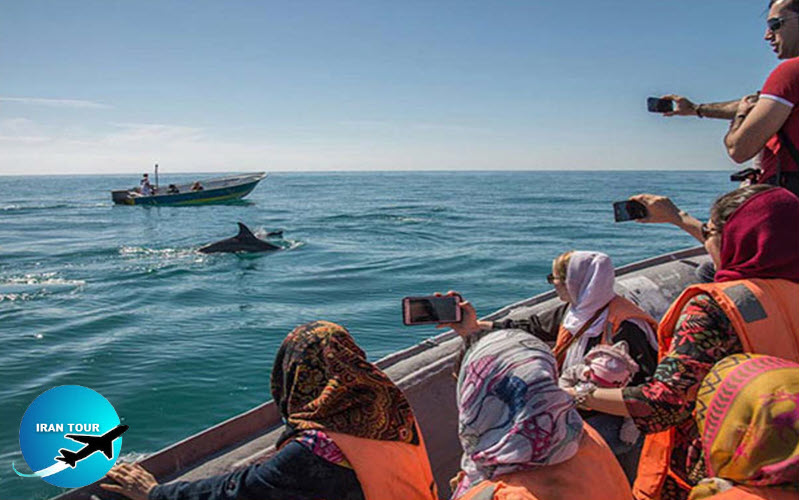 |
Now, as I hoist my backpack onto my back and embark on my journey, I know with certitude that I've stumbled upon one of the world's lesser-known treasures and I'm ready to rediscover the hidden gems that Hormuz Island has to offer. Located 8 kilometers off Iran's southern coast, Hormuz Island is accessible via the port of Bandar Abbas from the mainland or the port of Qeshm, the region's largest island. Though the one-hour ferry ride was comfortable, afterward I still fancied sitting on firm ground, which prompted me to take a left at the dock's exit. This scenic street is lined with a few of the island's best cafés, where I could bask in the sunshine while sipping away at my coffee to the sound of the sea. Afterward, I continued down the street and came to realize it led to the northernmost point of an otherwise round island spanning 42 square kilometers. It was no coincidence that the island's castle stood tall at this critical point, overlooking Bandar Abbas in the distance and all that lay in between.
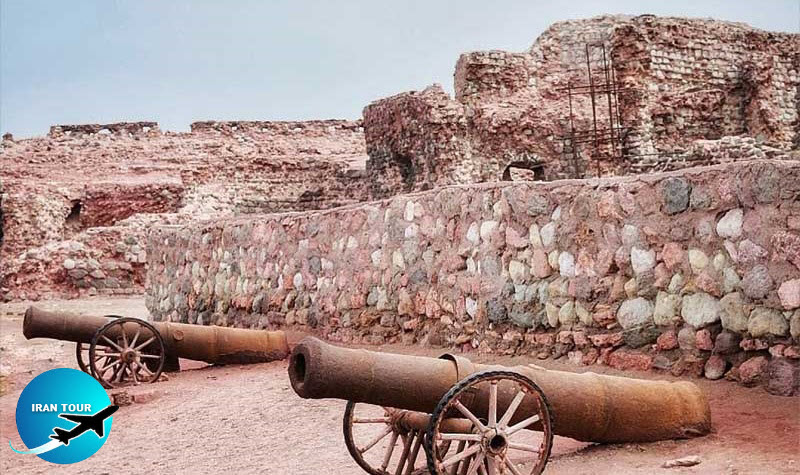 |
| Portuguese Castle |
As I bow slightly to pass under the entrance arch of Portuguese Castle, I find myself in a gigantic red stone yard guarded on three sides with towering walls and open to the sea on the fourth side. The Portuguese commander, Afonso de Albuquerque, ordered his forces to build this fort in the 16th century once they had captured the island. While nowadays the world knows of the Strait of Hormuz as a vital artery in international oil flow, this sole seaway connecting the Persian Gulf to the Gulf of Oman and the Arabian Sea has always been of strategic value. As such, Shah Abbas of the Safavid dynasty forged an alliance with the British East India Company to drive out the Portuguese invaders and, in return for their joint victory, granted trade rights to the British in the region. Though much of the fortress has succumbed to time and tide, a handful of cannons is scattered around the yard's central chapel; as if they are meant to fend off further destruction while visitors discover what is left of Hormuz's colonial history.
 |
I leave the past behind to learn what has become of the city in more recent times. Without a doubt, tourism is a driving force on the island. Since I last visited, plenty of small local businesses has popped up to tend to travelers. However, Hormuz's warm and humid climate means that the majority of tourIsts visit mid-autumn till early spring, meanwhile the residents revert back to fishing and work elsewhere to earn a living. However, as more and more people are learning of the island's charm thanks to social media, the tourism inflow is growing and some non-locals have gone so far as to settle down here. One such notable example is Dr. Ahmad Nadalian whose environmental art projects have garnered him critical acclaim internationally. Not only did he find the island's museum in his name, but he has also had a pivotal role in gathering, documenting, and recreating the locals' art forms. His efforts in empowering women through education have since manifested in the widespread creation and marketing of handicrafts from resources available on the Island - most notably, colorful soils and seashells. In his museum, I feast my eyes on the many projects he has orchestrated and marvel at the Impact of a conscientious Individual. When I'm finally ready to leave, I grab a custom-made map of the island that Dr. Nadalian cooperated in designing and I gaze at the witty names chosen for the attractions as I try to devise an itinerary for myself.
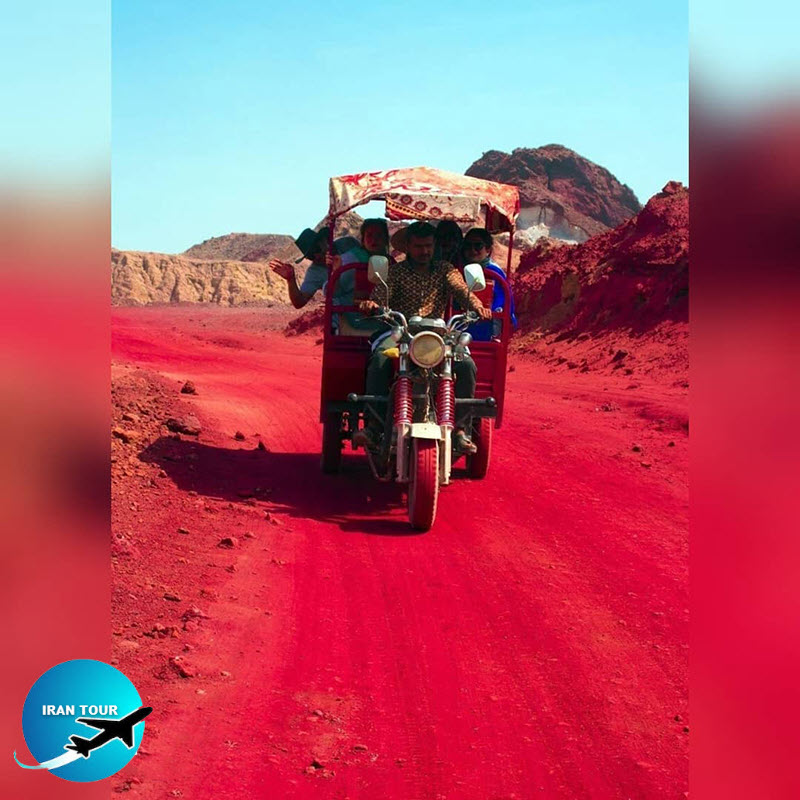 |
The true appeal of Hormuz lies not in its residential area, but out in its stunning nature and there are many ways to discover it. Like most places, you can rent a car, motorcycle, or bike depending on your preference. The most common form of transport, however, is the auto-rickshaws that are available in abundance and driven by locals who know the layout well enough to guide you or perhaps give you a quick tour. I instruct the driver to proceed in a counter-clockwise tour of the highlights which means my first stop is at the Salt Goddess (Elahe-ye Namak). What seems like snow from afar, turns out to be salt sediments from the smooth turquoise mountains that stand out from the burnt umber ground. The otherworldly aura of the sight lingers as I return to my rickshaw and proceed to the next spot: Rainbow Valley (Darre-ye rangin kamaan). Walking through the colorful surroundings, I see for myself why this island is dubbed geological heaven? The island itself is a salt dome with two periods of volcanic activity In its past, which have blessed it with an uncanny diversity of sedimentary and igneous rocks. The mixture of yellow, red, green, and dark rocks in Rainbow Valley is a manifestation of the variety of colors to be found around the island.
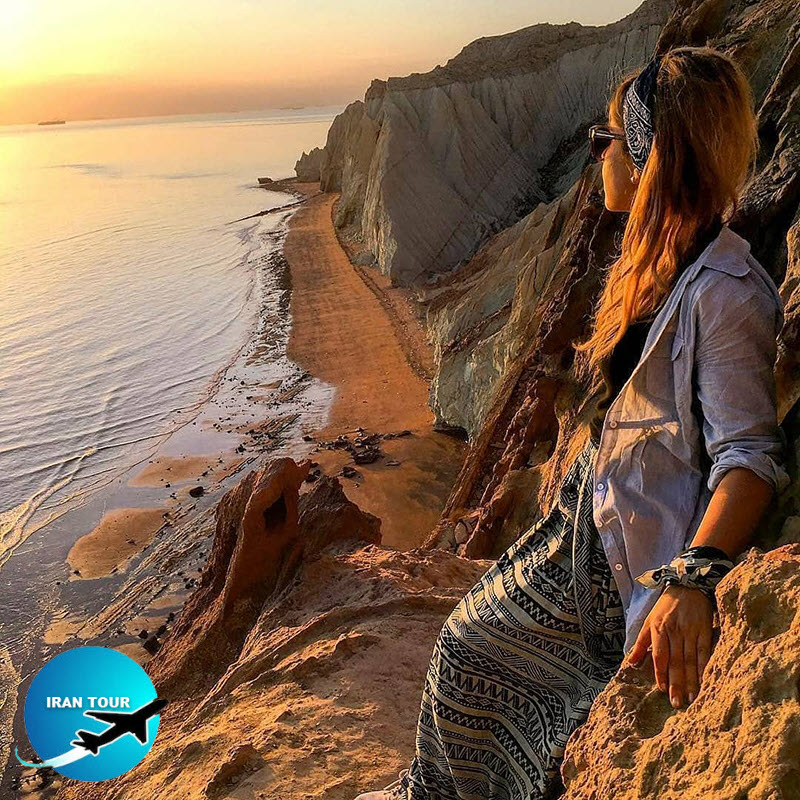 |
But it's not just colors that give Hormuz Island Its mystical reputation, as I soon find out at the Valley of Statues (darre-ye mojasameha). Here I must maneuver my way through the jagged mountains that take on mythical shapes to the imaginative beholder. At the path's end, I'm shocked to find myself peering over a pristine beach from hundreds of meters above. The viewpoint is thrilling, even to those unafraid of heights, and the most daring can approach the ledge carefully to get the best view, especially at sunset. Nerve-wracked and exhilarated, I climb back into my rickshaw and bear witness as, minutes later, it makes a turn onto a road of red. The color intensifies as we steer down the slope to the Red Soil Mine (madan-e khak-e sorkh). Locals make use of this red sole known as gelak for cooking, but it's also exported to manufacture cosmetics and ceramics. This peculiar patch of red becomes twice as surprising once I reach the adjacent beach, only to see it glittering under the sunlight! The Silver Beach (sahel-e noghreyl), located on the southern side of the Island, Is a sight to behold for its unique juxtaposition of silver sand and dyed red waters. It's also a favorite for people looking to swim since the seabed is mostly comprised of sand here, as opposed to other parts where sharp rocks pose a potential threat for the uninformed swimmer.
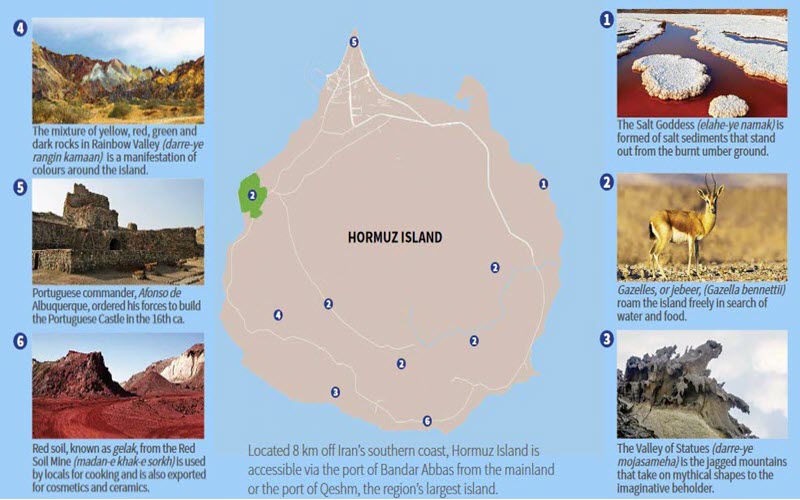 |
By now, I've toured half of the island, but the other half is just as intriguing. If luck is on my side today, I might witness a gazelle, or jebeer (Gazella bennettii), which roam the island freely in search of water and food; alternatively, an infrequent dolphin or turtle might surface near the coast. Regardless, I can check out the beaches which have been attractIng campers, Iranian and foreign, for the past couple of years. Mofannegh beach is best reached via boat which gives it a sense of seclusion and privacy. But ahead of me lies a stretch of beach easily accessible by land, Chand Derakht beach, which literally means 'many trees beach. The name is a reference to the neighboring beach, Tak Derakht beach, meaning "single tree beach' and it signifies that firewood and shade are more readily available in the former.
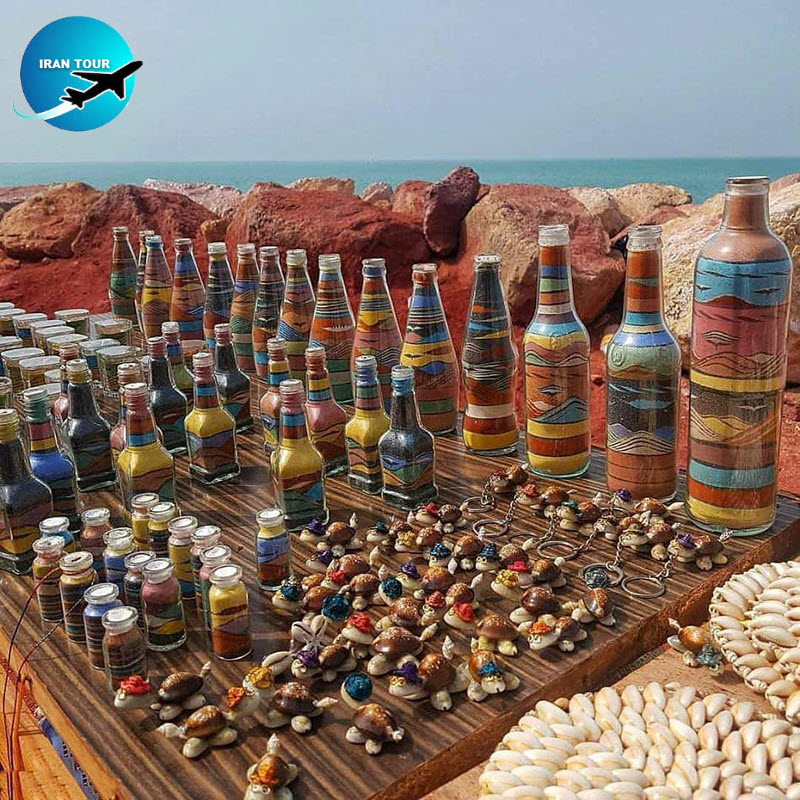 |
However, keep in mind that in an environment where precipitation is low and most water is salty, trees have a hard time collecting water for growth so, to dissuade perpetrators from robbing them of their branches, they are equipped with large thorns that deliver a lasting sting. But feel free to enjoy their shade while the sun warms the seas for you to take a dip. As I make my way back to the city, I feel confident that I now know what the island has in store for me. As I extend my stay in Hormuz Island, it teaches me that in order to unravel its many mysteries I require the kind of patience that a visiting traveler cannot afford. I was not mistaken to take a break from all else to devote to this intriguing island.
- Details
- Category: Where to go in IRAN